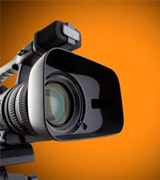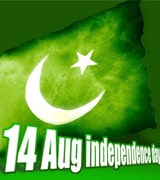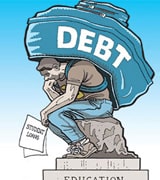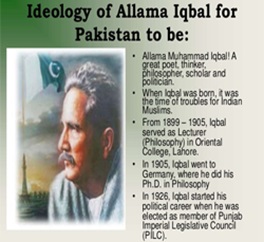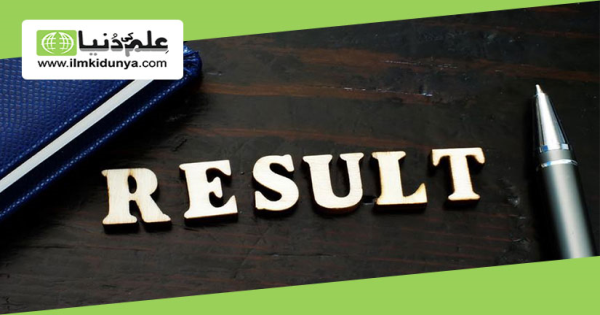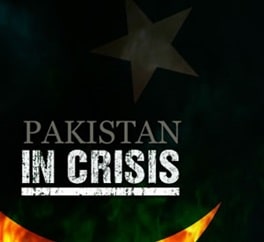Background:
The Swiss Confederation was founded in 1291 as a defensive alliance among three cantons. In succeeding years, other localities joined the original three. The Swiss Confederation secured its independence from the Holy Roman Empire in 1499. A constitution of 1848, subsequently modified in 1874, replaced the confederation with a centralized federal government. Switzerland's sovereignty and neutrality have long been honored by the major European powers, and the country was not involved in either of the two World Wars. The political and economic integration of Europe over the past half century, as well as Switzerland's role in many UN and international organizations, has strengthened Switzerland's ties with its neighbors. However, the country did not officially become a UN member until 2002. Switzerland remains active in many UN and international organizations but retains a strong commitment to neutrality.
Location:
Central Europe, east of France, north of Italy
Geographic coordinates:
47 00 N, 8 00 E
Map references:
Europe
Area:
total: 41,277 sq km
country comparison to the world: 135
land: 39,997 sq km
water: 1,280 sq km
Area - comparative:
slightly less than twice the size of New Jersey
Land boundaries:
total: 1,852 km
border countries: Austria 164 km, France 573 km, Italy 740 km, Liechtenstein 41 km, Germany 334 km
Coastline:
0 km (landlocked)
Maritime claims:
none (landlocked)
Climate:
Current Weather
temperate, but varies with altitude; cold, cloudy, rainy/snowy winters; cool to warm, cloudy, humid summers with occasional showers
Terrain:
mostly mountains (Alps in south, Jura in northwest) with a central plateau of rolling hills, plains, and large lakes
Elevation extremes:
lowest point: Lake Maggiore 195 m
highest point: Dufourspitze 4,634 m
Natural resources:
hydropower potential, timber, salt
Land use:
arable land: 9.91%
permanent crops: 0.58%
other: 89.51% (2005)
Irrigated land:
250 sq km (2003)
Total renewable water resources:
53.3 cu km (2005)
Freshwater withdrawal (domestic/industrial/agricultural):
total: 2.52 cu km/yr (24%/74%/2%)
per capita: 348 cu m/yr (2002)
Natural hazards:
avalanches, landslides; flash floods
Environment - current issues:
air pollution from vehicle emissions and open-air burning; acid rain; water pollution from increased use of agricultural fertilizers; loss of biodiversity
Environment - international agreements:
party to: Air Pollution, Air Pollution-Nitrogen Oxides, Air Pollution-Persistent Organic Pollutants, Air Pollution-Sulfur 85, Air Pollution-Sulfur 94, Air Pollution-Volatile Organic Compounds, Antarctic Treaty, Biodiversity, Climate Change, Climate Change-Kyoto Protocol, Desertification, Endangered Species, Environmental Modification, Hazardous Wastes, Marine Dumping, Marine Life Conservation, Ozone Layer Protection, Ship Pollution, Tropical Timber 83, Tropical Timber 94, Wetlands, Whaling
signed, but not ratified: Law of the Sea
Geography - note:
landlocked; crossroads of northern and southern Europe; along with southeastern France, northern Italy, and southwestern Austria, has the highest elevations in the Alps
Population:
7,623,438 (July 2010 est.)
country comparison to the world: 94
Age structure:
0-14 years: 15.6% (male 616,561/female 571,610)
15-64 years: 68.1% (male 2,609,673/female 2,567,245)
65 years and over: 16.3% (male 514,761/female 724,617) (2010 est.)
Median age:
total: 41.3 years
male: 40.3 years
female: 42.4 years (2010 est.)
Population growth rate:
0.223% (2010 est.)
country comparison to the world: 180
Birth rate:
9.56 births/1,000 population (2010 est.)
country comparison to the world: 205
Death rate:
8.65 deaths/1,000 population (July 2010 est.)
country comparison to the world: 84
Net migration rate:
1.31 migrant(s)/1,000 population (2010 est.)
country comparison to the world: 49
Urbanization:
urban population: 73% of total population (2008)
rate of urbanization: 0.5% annual rate of change (2005-10 est.)
Sex ratio:
at birth: 1.054 male(s)/female
under 15 years: 1.08 male(s)/female
15-64 years: 1.02 male(s)/female
65 years and over: 0.72 male(s)/female
total population: 0.97 male(s)/female (2010 est.)
Infant mortality rate:
total: 4.12 deaths/1,000 live births
country comparison to the world: 204
male: 4.58 deaths/1,000 live births
female: 3.64 deaths/1,000 live births (2010 est.)
Life expectancy at birth:
total population: 80.97 years
country comparison to the world: 15
male: 78.14 years
female: 83.95 years (2010 est.)
Total fertility rate:
1.46 children born/woman (2010 est.)
country comparison to the world: 193
HIV/AIDS - adult prevalence rate:
0.6% (2007 est.)
country comparison to the world: 68
HIV/AIDS - people living with HIV/AIDS:
25,000 (2007 est.)
country comparison to the world: 74
HIV/AIDS - deaths:
fewer than 500 (2007 est.)
country comparison to the world: 92
Nationality:
noun: Swiss (singular and plural)
adjective: Swiss
Ethnic groups:
German 65%, French 18%, Italian 10%, Romansch 1%, other 6%
Religions:
Roman Catholic 41.8%, Protestant 35.3%, Muslim 4.3%, Orthodox 1.8%, other Christian 0.4%, other 1%, unspecified 4.3%, none 11.1% (2000 census)
Languages:
German (official) 63.7%, French (official) 20.4%, Italian (official) 6.5%, Serbo-Croatian 1.5%, Albanian 1.3%, Portuguese 1.2%, Spanish 1.1%, English 1%, Romansch (official) 0.5%, other 2.8% (2000 census)
note: German, French, Italian, and Romansch are all national and official languages
Literacy:
definition: age 15 and over can read and write
total population: 99%
male: 99%
female: 99% (2003 est.)
School life expectancy (primary to tertiary education):
total: 16 years
male: 16 years
female: 15 years (2008)
Education expenditures:
5.3% of GDP (2007)
country comparison to the world: 53
Country name:
conventional long form: Swiss Confederation
conventional short form: Switzerland
local long form: Schweizerische Eidgenossenschaft (German); Confederation Suisse (French); Confederazione Svizzera (Italian); Confederaziun Svizra (Romansh)
local short form: Schweiz (German); Suisse (French); Svizzera (Italian); Svizra (Romansh)
Government type:
formally a confederation but similar in structure to a federal republic
Capital:
name: Bern
geographic coordinates: 46 57 N, 7 26 E
time difference: UTC+1 (6 hours ahead of Washington, DC during Standard Time)
daylight saving time: +1hr, begins last Sunday in March; ends last Sunday in October
Administrative divisions:
26 cantons, singular - canton in French; cantoni, singular - cantone in Italian; Kantone, singular - Kanton in German); Aargau, Appenzell Ausser-Rhoden, Appenzell Inner-Rhoden, Basel-Landschaft, Basel-Stadt, Bern, Fribourg, Geneve, Glarus, Graubunden, Jura, Luzern, Neuchatel, Nidwalden, Obwalden, Sankt Gallen, Schaffhausen, Schwyz, Solothurn, Thurgau, Ticino, Uri, Valais, Vaud, Zug, Zurich
note: 6 of the cantons - Appenzell Ausser-Rhoden, Appenzell-Inner-Rhoden, Basel-Landschaft, Basel-Stadt, Nidwalden, Obwalden - are styled half cantons because they elect only one member to the Council of States and, in popular referendums where a majority of popular votes and a majority of cantonal votes are required, these six cantons only have a half vote
Independence:
1 August 1291 (founding of the Swiss Confederation)
National holiday:
Founding of the Swiss Confederation, 1 August (1291)
Constitution:
revision of Constitution of 1874 approved by the Federal Parliament 18 December 1998, adopted by referendum 18 April 1999, officially entered into force 1 January 2000
Legal system:
civil law system influenced by customary law; judicial review of legislative acts, except with respect to federal decrees of general obligatory character; accepts compulsory ICJ jurisdiction with reservations
Suffrage:
18 years of age; universal
Executive branch:
chief of state: President of the Swiss Confederation Doris LEUTHARD (since 1 January 2010); Vice President (vacant); note - the president is both the chief of state and head of government representing the Federal Council; the Federal Council is the formal chief of state and head of government whose council members, rotating in one-year terms as federal president, represent the Council
head of government: President of the Swiss Confederation Doris LEUTHARD (since 1 January 2009); Vice President (vacant)
cabinet: Federal Council or Bundesrat (in German), Conseil Federal (in French), Consiglio Federale (in Italian) is elected by the Federal Assembly usually from among its members for a four-year term
(For more information visit the World Leaders website )
elections: president and vice president elected by the Federal Assembly from among the members of the Federal Council for a one-year term (they may not serve consecutive terms); election last held on 2 December 2009 (next to be held in December 2010)
election results: Doris LEUTHARD elected president; number of Federal Assembly votes - 158 of 183; Moritz LEUENBERGER elected vice president; number of Federal Assembly votes - 128 of 187; announced he would retire October 2010
Legislative branch:
bicameral Federal Assembly or Bundesversammlung (in German), Assemblee Federale (in French), Assemblea Federale (in Italian) consists of the Council of States or Standerat (in German), Conseil des Etats (in French), Consiglio degli Stati (in Italian) (46 seats; membership consists of 2 representatives from each canton and 1 from each half canton; members to serve four-year terms) and the National Council or Nationalrat (in German), Conseil National (in French), Consiglio Nazionale (in Italian) (200 seats; members elected by popular vote on the basis of proportional representation to serve four-year terms)
elections: Council of States - last held in most cantons in October 2007 (each canton determines when the next election will be held); National Council - last held on 21 October 2007 (next to be held in October 2011)
election results: Council of States - percent of vote by party - NA; seats by party - CVP 15, FDP 12, SVP 7, SPS 9, other 3; National Council - percent of vote by party - SVP 29%, SPS 19.5%, FDP 15.6%, CVP 14.6%, Greens 9.6%, other 11.7%; seats by party - SVP 62, SPS 43, FDP 31, CVP 31, Green Party 20, other small parties 13
Judicial branch:
Federal Supreme Court (judges elected for six-year terms by the Federal Assembly)
Political parties and leaders:
Green Party (Gruene Partei der Schweiz or Gruene, Parti Ecologiste Suisse or Les Verts, Partito Ecologista Svizzero or I Verdi, Partida Ecologica Svizra or La Verda) [Ueli LEUENBERGER]; Christian Democratic People's Party (Christlichdemokratische Volkspartei der Schweiz or CVP, Parti Democrate-Chretien Suisse or PDC, Partito Democratico-Cristiano Popolare Svizzero or PDC, Partida Cristiandemocratica dalla Svizra or PCD) [Christophe DARBELLAY]; Free Democratic Party or FDP.The Liberals (FDP.Die Liberalen, PLR.Les Liberaux-Radicaux, PLR.I Liberali) [Fulvio PELLI]; Social Democratic Party (Sozialdemokratische Partei der Schweiz or SPS, Parti Socialist Suisse or PSS, Partito Socialista Svizzero or PSS, Partida Socialdemocratica de la Svizra or PSS) [Christian LEVRAT]; Swiss People's Party (Schweizerische Volkspartei or SVP, Union Democratique du Centre or UDC, Unione Democratica de Centro or UDC, Uniun Democratica dal Center or UDC) [Toni BRUNNER]; and other minor parties
Political pressure groups and leaders:
NA
International organization participation:
ADB (nonregional member), AfDB (nonregional member), Australia Group, BIS, CE, CERN, EAPC, EBRD, EFTA, ESA, FAO, FATF, G-10, IADB, IAEA, IBRD, ICAO, ICC, ICCt, ICRM, IDA, IEA, IFAD, IFC, IFRCS, ILO, IMF, IMO, IMSO, Interpol, IOC, IOM, IPU, ISO, ITSO, ITU, ITUC, LAIA (observer), MIGA, MONUC, NEA, NSG, OAS (observer), OECD, OIF, OPCW, OSCE, Paris Club, PCA, PFP, Schengen Convention, UN, UNCTAD, UNESCO, UNHCR, UNIDO, UNITAR, UNRWA, UNTSO, UNWTO, UPU, WCO, WHO, WIPO, WMO, WTO, ZC
Diplomatic representation in the US:
chief of mission: Ambassador Urs ZISWILER
chancery: 2900 Cathedral Avenue NW, Washington, DC 20008
telephone: [1] (202) 745-7900
FAX: [1] (202) 387-2564
consulate(s) general: Atlanta, Chicago, Los Angeles, New York, San Francisco
consulate(s): Boston
Diplomatic representation from the US:
chief of mission: Ambassador Donald S. BEYER, Jr.
embassy: Sulgeneckstrasse 19, CH-3007 Bern
mailing address: use embassy street address
telephone: [41] (031) 357 70 11
FAX: [41] (031) 357 73 44
Flag description:
red square with a bold, equilateral white cross in the center that does not extend to the edges of the flag; various medieval legends purport to describe the origin of the flag; a white cross used as identification for troops of the Swiss Confederation is first attested at the Battle of Laupen (1339)
National anthem:
name: "Schweizerpsalm" [German] "Cantique Suisse" [French] "Salmo svizzero," [Italian] "Psalm svizzer" [Romansch] (Swiss Psalm)
lyrics/music: Leonhard WIDMER [German], Charles CHATELANAT [French], Camillo VALSANGIACOMO [Italian], and Flurin CAMATHIAS [Romansch]/Alberik ZWYSSIG
note: unofficially adopted 1961, official adoption 1981; the anthem has been popular in a number of Swiss cantons since its composition (in German) in 1841; translated into the other three official languages of the country (French, Italian, and Romansch), it is official in each of those languages
Economy - overview:
Switzerland is a peaceful, prosperous, and modern market economy with low unemployment, a highly skilled labor force, and a per capita GDP among the highest in the world. Switzerland's economy benefits from a highly developed service sector, led by financial services, and a manufacturing industry that specializes in high-technology, knowledge-based production. In recent years the Swiss have brought their economic practices largely into conformity with the EU's, in order to enhance their international competitiveness, but some trade protectionism remains, particularly for its small agricultural sector. The global financial crisis and resulting economic downturn put Switzerland in a recession in 2009 as global export demand stalled. The Swiss National Bank during this period effectively implemented a zero-interest rate policy in a bid to boost the economy and prevent appreciation of the franc. Switzerland's economy will probably experience modest GDP growth in 2010, when Bern is scheduled to implement a third fiscal stimulus program, but its prized banking sector has recently faced significant challenges. The country's largest banks suffered sizable losses in 2008-09, leading its largest bank to accept a government rescue deal in late 2008. Switzerland has also come under increasing pressure from individual neighboring countries, the EU, the US, and international institutions to reform its banking secrecy laws. Consequently, the government agreed to conform to OECD regulations on administrative assistance in tax matters, including tax evasion. The government has renegotiated its double taxation agreements with numerous countries, including the US, to incorporate the OECD standard. Parliament will vote on the first five negotiated agreements, including the agreement with the US, in March 2010. These agreements, if passed by Parliament, will be subject to public referendum. In 2009, Swiss financial regulators ordered the country's largest bank to reveal at Washington's behest the names of US account-holders suspected of using the bank to commit tax fraud. These steps will have a lasting impact on Switzerland's long history of bank secrecy.
GDP (purchasing power parity):
$313.3 billion (2009 est.)
country comparison to the world: 38
$319.3 billion (2008 est.)
$313.4 billion (2007 est.)
note: data are in 2009 US dollars
GDP (official exchange rate):
$491.9 billion (2009 est.)
GDP - real growth rate:
-1.9% (2009 est.)
country comparison to the world: 150
1.9% (2008 est.)
3.6% (2007 est.)
GDP - per capita (PPP):
$41,200 (2009 est.)
country comparison to the world: 17
$42,100 (2008 est.)
$41,500 (2007 est.)
note: data are in 2009 US dollars
GDP - composition by sector:
agriculture: 1.3%
industry: 27.7%
services: 71% (2006 est.)
Labor force:
4.103 million (2009 est.)
country comparison to the world: 87
Labor force - by occupation:
agriculture: 3.8%
industry: 23.9%
services: 72.3% (2009)
Unemployment rate:
3.7% (February 2010 est.)
country comparison to the world: 32
2.6% (2008 est.)
Population below poverty line:
7.4% (2009 est.)
Household income or consumption by percentage share:
lowest 10%: 7.5%
highest 10%: 19% (2007)
Distribution of family income - Gini index:
33.7 (2008)
country comparison to the world: 93
33.1 (1992)
Investment (gross fixed):
20.2% of GDP (2009 est.)
country comparison to the world: 93
Budget:
revenues: $178.5 billion
expenditures: $179.5 billion
note: includes federal, cantonal, and municipal accounts (2009 est.)
Public debt:
40.5% of GDP (2009 est.)
country comparison to the world: 65
41.1% of GDP (2008 est.)
Inflation rate (consumer prices):
-0.5% (2009 est.)
country comparison to the world: 17
2.4% (2008 est.)
Central bank discount rate:
0.05% (31 December 2009)
country comparison to the world: 139
0.05% (31 December 2008)
Commercial bank prime lending rate:
2.75% (31 December 2009 est.)
country comparison to the world: 154
3.34% (31 December 2008 est.)
Stock of narrow money:
$388 billion (31 December 2009 est.)
$310 billion (31 December 2008 est.)
Stock of broad money:
$764.9 billion (31 December 2009 est.)
$714.1 billion (31 December 2008 est.)
Stock of domestic credit:
$992.6 billion (31 December 2009 est.)
country comparison to the world: 16
$923.1 billion (31 December 2008)
Market value of publicly traded shares:
$NA (31 December 2009)
country comparison to the world: 12
$862.7 billion (31 December 2008)
$1.275 trillion (31 December 2007)
Agriculture - products:
grains, fruits, vegetables; meat, eggs
Industries:
machinery, chemicals, watches, textiles, precision instruments, tourism, banking, and insurance
Industrial production growth rate:
-2% (2006 est.)
country comparison to the world: 88
Electricity - production:
59.1 billion kWh (2009 est.)
country comparison to the world: 42
Electricity - consumption:
62 billion kWh (2009 est.)
country comparison to the world: 40
Electricity - exports:
49.9 billion kWh (2009 est.)
Electricity - imports:
46.6 billion kWh (2009 est.)
Oil - production:
3,488 bbl/day (2009 est.)
country comparison to the world: 100
Oil - consumption:
280,000 bbl/day (2009 est.)
country comparison to the world: 46
Oil - exports:
12,230 bbl/day (2008 est.)
country comparison to the world: 95
Oil - imports:
269,400 bbl/day (2008 est.)
country comparison to the world: 39
Oil - proved reserves:
0 bbl
country comparison to the world: 115
Natural gas - production:
0 cu m (2008 est.)
country comparison to the world: 121
Natural gas - consumption:
3.282 billion cu m (2009 est.)
country comparison to the world: 71
Natural gas - exports:
0 cu m (2008 est.)
country comparison to the world: 115
Natural gas - imports:
3.282 billion cu m (2009 est.)
country comparison to the world: 39
Natural gas - proved reserves:
NA cu m (1 January 2009 est.)
Current account balance:
$54.01 billion (2009 est.)
country comparison to the world: 4
$3.531 billion (2008 est.)
Exports:
$208.5 billion (2009 est.)
country comparison to the world: 18
$241.2 billion (2008 est.)
Exports - commodities:
machinery, chemicals, metals, watches, agricultural products
Exports - partners:
Germany 20.98%, US 9.09%, France 8.62%, Italy 8.08%, Austria 5.38% (2009)
Imports:
$192.8 billion (2009 est.)
country comparison to the world: 18
$227.7 billion (2008 est.)
Imports - commodities:
machinery, chemicals, vehicles, metals; agricultural products, textiles
Imports - partners:
Germany 27.19%, Italy 10.42%, US 9.61%, France 7.69%, Netherlands 4.35% (2009)
Reserves of foreign exchange and gold:
$135.3 billion (31 December 2009 est.)
country comparison to the world: 14
$74.07 billion (31 December 2008 est.)
Debt - external:
$1.339 trillion (30 June 2009)
country comparison to the world: 10
$1.305 trillion (31 December 2008)
Stock of direct foreign investment - at home:
$496.8 billion (31 December 2009 est.)
country comparison to the world: 9
$405.1 billion (31 December 2008 est.)
Stock of direct foreign investment - abroad:
$806.5 billion (31 December 2009 est.)
country comparison to the world: 7
$726.3 billion (31 December 2008 est.)
Exchange rates:
Swiss francs (CHF) per US dollar - 1.1081 (2009), 1.0774 (2008), 1.1973 (2007), 1.2539 (2006), 1.2452 (2005)
Telephones - main lines in use:
4.82 million (2008)
country comparison to the world: 32
Telephones - mobile cellular:
8.78 million (2008)
country comparison to the world: 67
Telephone system:
general assessment: highly developed telecommunications infrastructure with excellent domestic and international services
domestic: ranked among leading countries for fixed-line teledensity and infrastructure; mobile-cellular subscribership roughly 115 per 100 persons; extensive cable and microwave radio relay networks
international: country code - 41; satellite earth stations - 2 Intelsat (Atlantic Ocean and Indian Ocean)
Broadcast media:
the publicly-owned radio and television broadcaster, Swiss Broadcasting Corporation (SRG/SSR), operates 7 national television networks, 3 broadcasting in German, 2 in Italian, and 2 in French; private commercial television stations broadcast regionally and locally; television broadcasts from stations in Germany, Italy, and France are widely accessed using multi-channel cable and satellite TV services; SRG/SSR operates 18 radio stations that, along with private broadcasters, provide national to local coverage (2008)
Internet country code:
.ch
Internet hosts:
4.816 million (2010)
country comparison to the world: 17
Internet users:
5.739 million (2008)
country comparison to the world: 41
Airports:
65 (2010)
country comparison to the world: 76
Airports - with paved runways:
total: 42
over 3,047 m: 3
2,438 to 3,047 m: 3
1,524 to 2,437 m: 14
914 to 1,523 m: 5
under 914 m: 17 (2010)
Airports - with unpaved runways:
total: 23
under 914 m: 23 (2010)
Heliports:
1 (2010)
Pipelines:
gas 1,662 km; oil 94 km; refined products 7 km (2009)
Railways:
total: 4,888 km
country comparison to the world: 36
standard gauge: 3,397 km 1.435-m gauge (3,142 km electrified)
narrow gauge: 1,481 km 1.000-m gauge (1,378 km electrified); 10 km 0.800-m gauge (10 km electrified) (2008)
Roadways:
total: 71,384 km
country comparison to the world: 66
paved: 71,384 km (includes 1,793 of expressways) (2009)
Waterways:
65 km; (Rhine River between Basel-Rheinfelden and Schaffhausen-Bodensee) (2008)
country comparison to the world: 103
Merchant marine:
total: 35
country comparison to the world: 82
by type: bulk carrier 15, cargo 9, chemical tanker 6, container 4, petroleum tanker 1
registered in other countries: 109 (Antigua and Barbuda 7, Bahamas 2, Cayman Islands 1, France 5, Germany 1, Italy 6, Liberia 17, Luxembourg 1, Malta 14, Marshall Islands 12, NZ 2, Panama 22, Portugal 3, Russia 4, Saint Vincent and the Grenadines 5, Singapore 4, Spain 1, Tonga 1, Tuvalu 1) (2010)
Ports and terminals:
Basel
Military branches:
Swiss Armed Forces: Land Forces, Swiss Air Force (Schweizer Luftwaffe) (2010)
Military service age and obligation:
19-26 years of age for male compulsory military service; 18 years of age for voluntary male and female military service; every Swiss male has to serve at least 260 days in the armed forces; conscripts receive 18 weeks of mandatory training, followed by seven 3-week intermittent recalls for training during the next 10 years (2010)
Manpower available for military service:
males age 16-49: 1,839,382
females age 16-49: 1,797,317 (2010 est.)
Manpower fit for military service:
males age 16-49: 1,502,736
females age 16-49: 1,468,785 (2010 est.)
Manpower reaching militarily significant age annually:
male: 47,043
female: 43,033 (2010 est.)
Military expenditures:
1% of GDP (2005 est.)
country comparison to the world: 129
Disputes - international:
none
Illicit drugs:
a major international financial center vulnerable to the layering and integration stages of money laundering; despite significant legislation and reporting requirements, secrecy rules persist and nonresidents are permitted to conduct business through offshore entities and various intermediaries; transit country for and consumer of South American cocaine, Southwest Asian heroin, and Western European synthetics; domestic cannabis cultivation and limited ecstasy production
Adil Altaf

















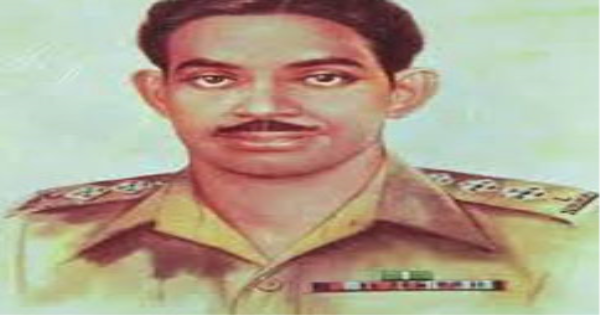
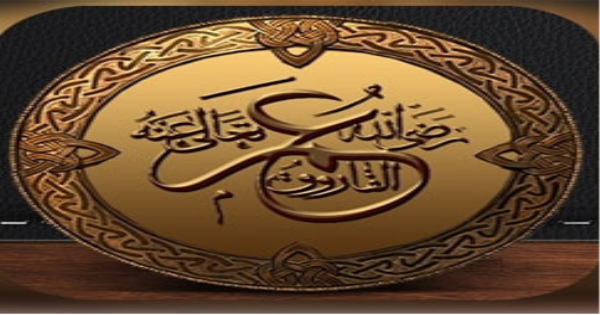
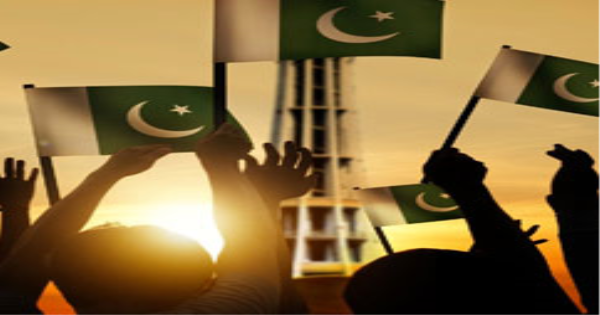
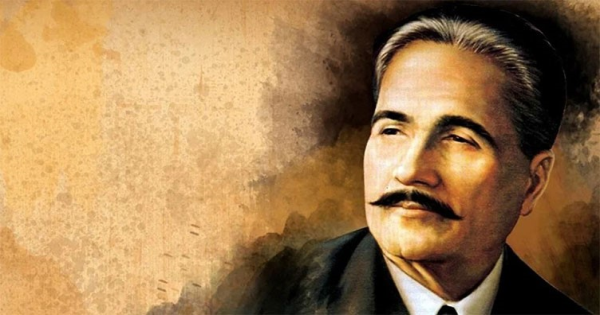

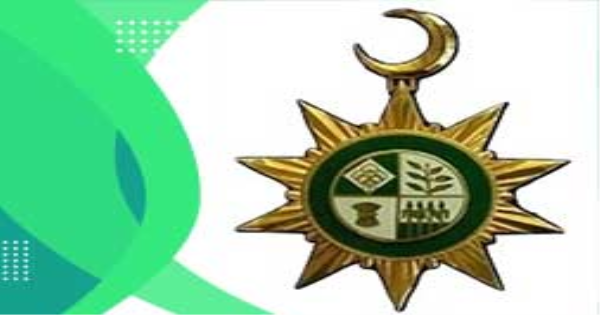




.jpg)

